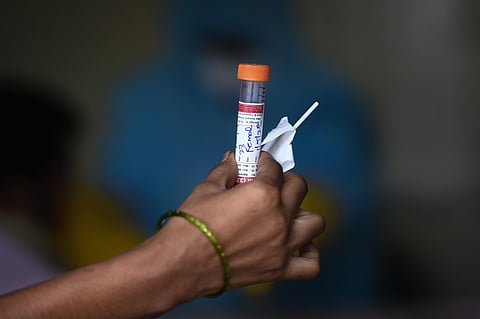

We have had one-and-a-half months of pan-India lockdown. The government expected it would flatten the epidemic curve, for which the damage to the economy was considered a commensurate sacrifice. Economy crumbled, people suffered and too many perished. Was the curve discernably flattened? Let the numbers answer.When the lockdown began on March 25, there were 531 persons tested positive for coronavirus. On April 1 and 30, the numbers were 1,998 and 34,863, respectively -- having increased four times in one week, and, 66 times in five weeks. One could plead that doubling time has increased a little bit. Yet, the epidemic grew exponentially. That is disappointing since people sacrificed a lot for flattening the curve. Remember, the battle on coronavirus is for the benefit of the people.
Two pertinent questions: First, would epidemic growth have been faster if we did not have lockdown? Were people’s sacrifices worth the tiny degree of curve flattening? Second, reviewing the epidemic growth, when can we expect the inevitable peak, after which the curve will decline? We leave the first question to the judgment of the public, but attempt to answer the second.
The numbers positive are proportional to the numbers tested. The detection rate has remained about 4% for many weeks; 4.7% on April 12 and 4.1% on April 30. Since the total tested by April 30 was a mere 8,30,200 (about 600 per million population), the result will not inform the magnitude of the epidemic.
Only the number of deaths allows us to back-calculate for estimating numbers infected, as mortality is 1-5% globally. We assume 4% for India. By April 30, 1,154 had died of Covid-19, suggesting that the total infected should have been 1,154 x 25 = 28,850, close to the 34,863 documented. However, the catch is — 28,850 are the estimated infected one month earlier, by April 1, since coronavirus infection causes death in 2-6 weeks. On April 1, only 1,998 (7% of 28,850) were detected.
Epidemiologists calculate that about 60% of the population have to be infected before the epidemic declines fast. As India’s population is 138,00,04,385, 60% infected will be 82,80,02,632. Contagious epidemics tend to have ‘normal distribution’ (bell-shaped) curve, such that half the number will be infected by the time of the peak. If the ultimate total infected will be 80% of the population, namely, 1,104 million, its half-way mark is 552 million. If epidemic recedes with 60% infected, half will be 414 million. So the peak will be when 414 to 552 million will be infected, or after 13.5 to 14 steps of doubling.
The peak will be when the number 28,850 grows 14,350 to 19,133 times, ie, by 13.5 to 14 doubling cycles. The range of doubling time is a week to 10 days. Currently, doubling of infections and deaths takes 10 days. So the peak will take 95-98 days (lower range) or 135 to 140 days (upper range). In other words, the peak will be sometime between early July and mid-August. There is one caveat — we are assuming that the reported deaths represented all deaths. Even if deaths are underestimated, the peak will still be within the above range.
In view of this long duration of the epidemic, lockdown could be lifted beginning now, allowing early social and economic recovery, particularly ensuring: return of the young (50 and below) to work, 100 % compliance wearing masks, hand hygiene and cocooning of the elderly and vulnerable with comorbidities.
Prof T Jacob John
Fellow, Indian Academy of Science; Fellow, Indian National Science Academy
Prof MS Seshadri
Fellow, Royal College of Physicians, Edinburgh